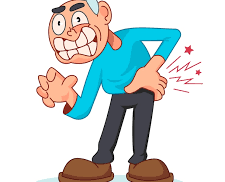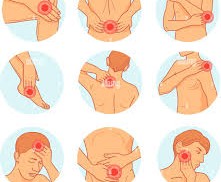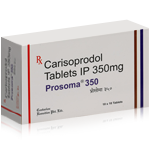Acute Muscle Pain – Understanding the Body’s Alarm and the Best Ways to Respond


What Makes Acute Muscle Pain Feel So Sudden?
Question: Why does sharp muscle pain appear so quickly, sometimes within seconds of movement? Answer: Acute muscle pain is the body’s instant alarm system. When a muscle is stretched too far or used too strongly, the body reacts immediately by sending strong signals to protect the area. This pain is not random—your body is telling you something important.
Key points:
- Muscles contain tiny fibers that tear slightly when overloaded
- Nerves send rapid signals to warn you to stop moving
- The brain increases tension around the hurt area to prevent more damage
- Pain appears fast because this is a protective reaction
- Even small injuries feel intense at first
The more people understand that sudden pain is a protective response—not just discomfort—the easier it becomes to take the right steps in the first moments. This early alarm helps you avoid a bigger injury by slowing down immediately.
Why Do Ordinary Daily Movements Cause Sharp Muscle Pain?
Question: How can simple movements like bending, lifting a bag, or getting out of bed cause acute muscle pain? Answer: Muscles are constantly working, even when we are unaware of it. When they become tired, dehydrated, stressed, or stiff, even normal movement can overload them.
Key points:
- Long periods of sitting weaken the lower back and neck
- Small, repeated actions can exhaust muscles quietly
- Lack of sleep slows muscle recovery
- Emotional stress creates hidden muscle tension
- Sudden movement on a stiff muscle can cause a sharp pull
Often, the cause is not the movement but the condition of the muscle before the movement. Daily habits shape muscle strength, and pain often reveals an ongoing imbalance in the body.
How the Body Communicates Through Pain Signals
Question: What is the body really trying to say when acute muscle pain appears? Answer: Pain is a message, not an enemy. Muscles use pain to tell you that something is not right—too much pressure, not enough support, or a movement that went too far.
Key points:
- Pain increases when the injured muscle is used
- Stiffness protects the area but also limits movement
- Heat or swelling is the body's repair process
- Sudden weakness helps prevent more strain
- The nature of the pain helps identify the type of injury
Understanding these signals can help people react correctly instead of ignoring or pushing through the pain. When you listen to these signals, healing becomes faster and more complete.
Rest, Heat, and Movement – Your First 24 Hours Matter Most
Question: What actions during the first day can change how fast a muscle heals? Answer: The first 24 hours are the foundation of recovery. Muscles respond strongly during this time, so early care can either reduce or increase the discomfort.
Key points:
- Rest reduces further tearing of muscle fibers
- Cold packs help calm swelling
- Heat the next day increases blood flow for healing
- Light movement prevents the muscle from becoming stiff
- Plenty of water supports muscle repair
These early steps are simple but powerful. Many people wait too long or do the wrong thing first, which slows healing. When early care is done correctly, the muscle often recovers quicker and more comfortably.
When Muscle Pain Is a Sign of Something Bigger
Question: Is acute muscle pain always harmless, or can it sometimes point to a deeper problem?Answer: While most cases are small strains, some signs suggest that the pain needs careful attention because the issue may involve more than the muscle.
Key points:
- Pain that spreads instead of staying in one spot
- Inability to move a limb normally
- Swelling or bruising that gets worse
- Pain lasting more than several days
- Pain with fever or overall tiredness
These signs suggest that the muscle may not be healing correctly and needs expert evaluation. Knowing when to get help prevents a simple strain from becoming a long-term issue.
When Natural Care Is Not Enough – How Prosoma Helps the Healing Process
Question: What can someone do when rest and home care do not reduce the muscle tension? Answer: When muscles stay locked, tight, or too painful to move, Prosoma (Carisoprodol) may be used to relax the muscle safely for a short time, giving the body space to rest.
Key points:
- Helps loosen tight or stiff muscles
- Makes rest more effective
- Reduces the pain that comes from constant tension
- Helps break the cycle of pain and guarding
- Works best when combined with gentle stretching and heat
Prosoma is not meant to replace care—it is used to support rest when pain prevents relaxation. By reducing the tightness, it allows the body to begin proper healing.
Building a Short-Term Recovery Plan With Prosoma
Question: Can Prosoma help someone return to normal activities faster? Answer: Yes, when used responsibly and only for short periods, Prosoma can help people regain movement and comfort that was blocked by intense muscle tension.
Key points:
- Supports normal movement while the muscle heals
- Helps reduce nighttime discomfort so the body can recover
- Works best together with warm packs, hydration, and slow stretching
- Should be used only for short-term muscle problems
- Helps prevent the pain from becoming chronic
The goal is not to hide the pain but to give the muscle the break it needs to heal naturally. Used correctly, Prosoma becomes a supportive part of a safe and effective recovery path.
Final Thoughts on Acute Muscle Pain
Acute muscle pain is more than discomfort—it is a clear message from the body. Understanding why it appears, how the body reacts, and what steps help most can make recovery smoother and faster. Early care, gentle rest, and attention to the body’s signals are essential. When tension is too strong, short-term support such as Prosoma may help ease the discomfort so proper healing can begin. Listening to the body is the key to preventing repeated injuries and maintaining long-term muscle health.
Drug Description Sources:
- U.S. National Library of Medicine
- Drugs.com
- WebMD
- Mayo Clinic
- RxList
- Healthline
- Cleveland Clinic
- MedlinePlus
- National Center for Biotechnology Information
- Johns Hopkins Medicine
Reviewed and Referenced By:
- Dr. Alan Carter, PharmD Clinical pharmacist specializing in chronic pain management. Frequently referenced by Drugs.com for reviewing safety guidance and medication usage.
- Dr. Emily Parker, MD Family care physician contributing to Healthline and WebMD. Known for simplifying muscle pain education for general readers.
- Dr. Jonathan Reed, MD Contributor for Mayo Clinic and Cleveland Clinic articles related to muscle injuries, recovery strategies, and safe use of muscle-relaxing treatments.
- Dr. Rebecca Stone, PharmD Medical reviewer for MedlinePlus and U.S. National Library of Medicine, known for evaluating medication profiles and patient safety information.
- Dr. Samuel Hayes, MD Medical editor for Johns Hopkins Medicine, offering expert input on understanding body pain responses and safe recovery steps.
(Updated at Nov 27 / 2025)

